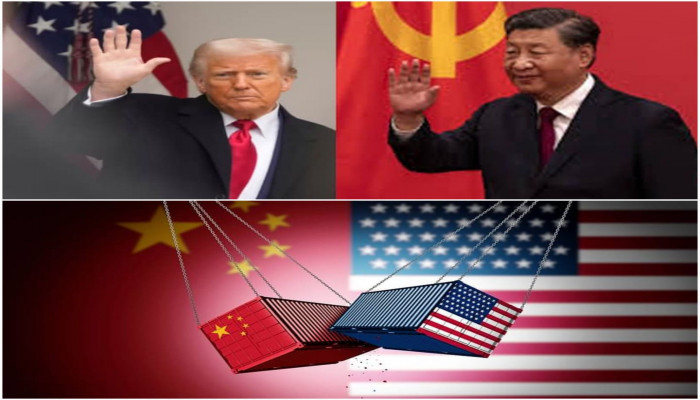Trump administration's potential 50–65% tariff range ignites hopes of renewed U.S.-China trade dialogue
- In Reports
- 03:58 PM, Apr 24, 2025
- Myind Staff
The Trump administration is reportedly considering a major cut in tariffs on Chinese goods, possibly lowering them from the current 145% to somewhere between 50% and 65%, according to a source familiar with the situation, as reported on Wednesday (April 23). However, this decision depends on the outcome of ongoing trade talks with China. This comes after a Wall Street Journal report mentioned that officials are considering tariff cuts as part of a broader effort to ease tensions between the U.S. and China.
According to The Journal, “China tariffs could come down to between 50% and 65%,” quoting a White House official. On Tuesday, President Trump expressed hope about reaching an agreement with China that would lead to much lower import tariffs. When questioned about the possibility of a 145% tariff, he replied, “It won’t be that high. It won’t be anywhere near that. If they don’t make a deal, we’ll set the deal.”
The Journal reports that the Trump administration is also considering a layered tariff system, similar to the House China committee's suggestion in 2023. Under this plan, a 35% tariff would be placed on products that don’t threaten U.S. national security. Strategic items like semiconductors and essential raw materials could face tariffs of over 100%.
The idea is to implement this system gradually over five years to protect national security while maintaining economic competitiveness.
While talks are still underway, sources say no final decision has been made, and multiple possibilities are still being considered. These discussions show the administration’s effort to find a new middle ground. At the same time, Trump sounded hopeful about securing a “fair deal” with China on trade, despite the ongoing strain caused by a sharp rise in tariffs between the two nations this month.
While addressing reporters at the White House, Trump said, “We are going to have a fair deal with China. It's going to be fair.” He stressed that discussions are still in progress and, when asked about direct talks with Chinese leaders, added, “Everything's active.”
The Trump administration’s newest set of tariffs has pushed the average rate on Chinese goods up to 145%. In retaliation, China hit back with tariffs of 125% on American exports, escalating a trade conflict rattling global markets and supply chains. Although the U.S. rolled out broad tariffs, it temporarily spared several major tech industries, like smartphones, computers and semiconductors, from the steepest 125% rates. Still, a 20% blanket tariff remains on Chinese imports, with the U.S. pointing to China's alleged involvement in the fentanyl crisis as justification. Officials have warned that these tech exemptions may not last. Trump also highlighted wider trade efforts, noting that over 100 countries have shown interest in trade talks with the U.S. since universal tariffs were introduced earlier this month. So far, 18 of them have officially submitted proposals.
While speaking to reporters at the White House, Trump said, “We are going to have a fair,” and emphasised, “Everyone's going to be happy, but we're no longer going to be the country that's ripped off by every country in the world.” He framed the administration’s firm tariff policy as part of a broader effort to shift global trade favouring the United States.







Comments